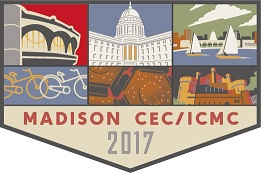Speaker
Description
Over the past couple of years we have carried out the thus far most extensive neutron irradiation study on Nb3Sn. Samples of five types of state-of-the-art multifilamentary wires as well as high-purity polycrystals were exposed to sequential fast neutron irradiation in the TRIGA Mark-II reactor in Vienna. Irradiation induced changes in the superconducting properties were assessed by means of magnetometry and transport measurements, and transmission electron microscopy was used to examine the defect structure resulting from the particle bombardment. We found a large increase in the volume pinning force up to very high neutron fluences, which can be described using a two-component pinning force model. Within this model irradiation induced defects are treated as point-like pinning centers, which enhance the original grain boundary pinning landscape. We put our results into context with other irradiation studies, and argue that the concept of pinning landscape enhancement through nano-scale defects should be transferrable to an industrial production process.
